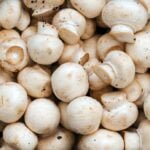Alternative Substrates for Mushroom Cultivation
Learn about Alternative Substrates for Mushroom Cultivation, Mushroom cultivation relies heavily on the choice of substrate, the material that serves as the growing medium for the mycelium. While soyhull has been a popular substrate due to its availability and nutritive qualities, there is a growing interest in exploring Alternative Substrates for Mushroom Cultivation. This post delves into various alternatives such as sunflower seed hulls, coir (coconut fiber), agricultural byproducts like corncobs, cotton waste, grape pomace, grasses, tea leaves, and various seed and legume shells/pods/husks. Additionally, the post will touch upon the unique properties of sesame stems and soybean stems, which have been identified as suitable substrates for Pleurotus sajor-caju. It’s essential to understand that working with these alternatives may require specific substrate formulations to optimize mushroom growth.
Sunflower Seed Hulls For Mushroom Cultivation
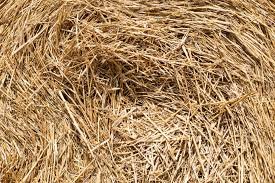 Sunflower seed hulls are emerging as a promising Alternative Substrates for Mushroom Cultivation, and their popularity is on the rise within the cultivation community. The key to their effectiveness lies in their composition, particularly their richness in cellulose and hemicellulose. These structural components of plant cell walls serve as an excellent source of carbon for the mycelium.
Sunflower seed hulls are emerging as a promising Alternative Substrates for Mushroom Cultivation, and their popularity is on the rise within the cultivation community. The key to their effectiveness lies in their composition, particularly their richness in cellulose and hemicellulose. These structural components of plant cell walls serve as an excellent source of carbon for the mycelium.
Cellulose: The primary component of plant cell walls, cellulose is a complex carbohydrate made up of glucose molecules linked together. This provides a solid foundation for the mycelium to colonize and expand, facilitating robust mushroom growth.
Hemicellulose: Complementing cellulose, hemicellulose is a heterogeneous polymer of various sugar molecules. Its more branched and amorphous structure compared to cellulose makes it a readily available energy source for the mycelium. The combination of cellulose and hemicellulose in sunflower seed hulls creates a substrate that supports the diverse nutritional needs of mushrooms throughout their growth cycle.
Abundance and Cost-Effectiveness
One of the compelling reasons behind the increasing popularity of sunflower seed hulls is their abundance and cost-effectiveness. Sunflower is a widely cultivated crop globally, and its seeds are a staple in various industries, including the food and oil sectors. Consequently, sunflower seed hulls are generated in large quantities as a byproduct of seed processing.
Abundant Supply: The sheer volume of sunflower seed hulls available makes them an attractive option for mushroom cultivators. The accessibility of this Alternative Substrates for Mushroom Cultivation helps reduce dependence on traditional substrates, promoting sustainability in the cultivation process.
Cost-Effective: The cost-effectiveness of sunflower seed hulls further enhances their appeal. As a byproduct of the sunflower industry, these hulls are often available at a lower cost compared to other commercial substrates. This affordability can significantly impact the overall economics of mushroom cultivation operations.
Cultivation Considerations
While sunflower seed hulls offer numerous advantages, their utilization in mushroom cultivation requires careful consideration. Certain factors should be taken into account to optimize their use and ensure successful mushroom production.
Processing: Proper processing of sunflower seed hulls is crucial to enhance their suitability as a substrate. Grinding or pelletizing can be employed to create a more uniform and manageable substrate texture, facilitating mycelial colonization.
Supplementation: Depending on the specific nutritional needs of the mushroom species being cultivated, supplementation may be necessary. While sunflower seed hulls provide a rich source of carbon, additional nitrogen sources may need to be introduced to achieve a balanced nutrient profile.
Sterilization: Like many other substrates, sterilization is a critical step in preparing sunflower seed hulls for mushroom cultivation. This helps eliminate competing microorganisms and ensures a clean environment for the mycelium to thrive.
Future Implications
The growing interest in sunflower seed hulls as a Alternative Substrates for Mushroom Cultivation reflects a broader trend in mushroom cultivation towards sustainable and economically viable practices. As research and experimentation continue, there is potential for further optimization of substrate formulations and cultivation techniques. The versatility of sunflower seed hulls, coupled with their widespread availability, positions them as a valuable resource in the quest for innovative and environmentally friendly approaches to mushroom cultivation.
Coir (Coconut Fiber) For Mushroom Cultivation
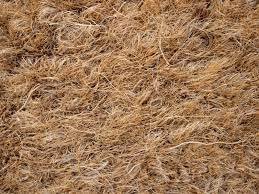 Coir, derived from the husk of coconuts, has garnered significant attention as a versatile and sustainable substrate for mushroom cultivation. Its fibrous structure, moisture-retention capabilities, and abundance make it an attractive alternative to traditional substrates. This post explores the unique properties of coir and its application in mushroom cultivation, shedding light on its benefits and considerations.
Coir, derived from the husk of coconuts, has garnered significant attention as a versatile and sustainable substrate for mushroom cultivation. Its fibrous structure, moisture-retention capabilities, and abundance make it an attractive alternative to traditional substrates. This post explores the unique properties of coir and its application in mushroom cultivation, shedding light on its benefits and considerations.
Fibrous Structure and Water Retention
One of the standout features of coir that makes it conducive to mushroom cultivation is its fibrous structure. The intertwining fibers create a porous and aerated environment, allowing for optimal gas exchange and providing an ideal habitat for mycelial growth.
Moisture Retention: Coir has a remarkable capacity for water retention. This attribute is crucial in mushroom cultivation, where maintaining an optimal level of moisture is essential for mycelium colonization and subsequent fruiting body development. The ability of coir to hold moisture while still allowing excess water to drain promotes a balanced and stable substrate environment.
Sustainability and Abundance
Coir’s sustainability is rooted in its status as a byproduct of the coconut industry. Coconut husks, which would otherwise be considered waste, are repurposed to create coir. This not only minimizes environmental impact but also contributes to the circular economy by utilizing a resource that might have otherwise been discarded.
Renewable Resource: Coconut palms are prolific and have a rapid regeneration rate, making coir a renewable resource. This aligns with the growing emphasis on sustainable practices within the agricultural and horticultural sectors.
Waste Reduction: By repurposing coconut husks, coir cultivation contributes to waste reduction in the coconut industry. The utilization of agricultural byproducts in mushroom cultivation aligns with the principles of eco-friendly and sustainable agriculture.
Application in Mushroom Cultivation
Coir’s application in mushroom cultivation extends across various stages of the cultivation process, from substrate preparation to the actual growing environment for mushrooms.
Substrate Preparation: Coir can serve as the primary component of a Alternative Substrates for Mushroom Cultivation or be blended with other materials such as vermiculite or perlite to enhance its physical properties. Proper sterilization is crucial to eliminate contaminants and create a favorable environment for mycelial colonization.
Casing Material: Coir is also employed as a casing material – the layer covering the substrate during the fruiting stage. This layer helps regulate humidity, supports pinning, and provides a microenvironment conducive to mushroom development.
Considerations and Best Practices
While coir offers numerous advantages, there are considerations and best practices to maximize its efficacy in mushroom cultivation.
pH Adjustments: Coir tends to have a slightly acidic pH, which may need adjustment depending on the mushroom species being cultivated. Lime or other pH-adjusting agents can be used to bring the substrate to the desired pH range.
Supplementation: Depending on the nutritional needs of the mushroom species, supplementation may be required. Coir is primarily a carbon source, so nitrogen-rich supplements like soybean meal or bran may be added to achieve a balanced nutrient profile.
Sterilization: As with any Alternative Substrates for Mushroom Cultivation, proper sterilization of coir is essential to eliminate potential contaminants and provide a clean slate for mycelial colonization.
Future Directions
The use of coir in mushroom cultivation exemplifies the industry’s shift towards sustainable and environmentally conscious practices. Ongoing research aims to optimize coir-based substrates, exploring potential enhancements and formulations that cater to the specific requirements of different mushroom species.
Agricultural Byproducts For Mushroom Cultivation
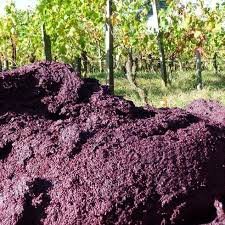 Corncobs: Corncobs are a byproduct of the corn industry and are rich in cellulose. They have a porous structure that aids in water retention and aeration. Proper preparation, such as grinding or pelletizing, may be necessary to optimize corncobs as a Alternative Substrates for Mushroom Cultivation.
Corncobs: Corncobs are a byproduct of the corn industry and are rich in cellulose. They have a porous structure that aids in water retention and aeration. Proper preparation, such as grinding or pelletizing, may be necessary to optimize corncobs as a Alternative Substrates for Mushroom Cultivation.- Cotton Waste: Cotton waste, including cottonseed hulls, is another potential substrate. It is rich in lignocellulose, providing a suitable carbon source for mushroom cultivation. Cotton waste may require supplementation with nitrogen-rich materials to balance the nutrient content.
- Grape Pomace: Grape pomace, the remains of grapes after the juice extraction process, is an agricultural byproduct with potential as a Alternative Substrates for Mushroom Cultivation. It contains a mix of grape skins, seeds, and stems, providing a diverse nutrient profile. However, adjustments to pH and supplementation may be necessary.
- Grasses: Various grasses, such as straw and hay, can serve as mushroom substrates. They are rich in cellulose and can be particularly useful when combined with nitrogen supplements. Grasses may require proper conditioning, such as chopping or pelletizing, to enhance their suitability.
- Tea Leaves: Used tea leaves, a common household waste, can be repurposed as a substrate for mushroom cultivation. Tea leaves contain organic matter and nutrients that can support mycelial growth. However, proper sterilization and supplementation may be needed for optimal results.
Seed and Legume Shells/Pods/Husks
The shells, pods, and husks of various seeds and legumes have emerged as intriguing Alternative Substrates for Mushroom Cultivation. These agricultural byproducts, often overlooked, possess unique qualities that can contribute to sustainable and cost-effective cultivation practices. In this exploration, we delve into the potential of seed and legume shells/pods/husks as substrates and discuss considerations for their successful application in mushroom cultivation.
Nutrient-Rich Lignocellulose
Seed and legume shells/pods/husks are rich in lignocellulose, a complex structure comprising cellulose, hemicellulose, and lignin. This composition provides a diverse array of nutrients essential for mycelial growth and mushroom development.
Cellulose: The primary structural component of plant cell walls, cellulose serves as a fundamental carbon source for the mycelium. Its presence in seed and legume byproducts establishes a solid foundation for robust mycelial colonization.
Hemicellulose: Offering a mix of various sugar molecules, hemicellulose complements cellulose by providing additional energy sources. This diversity in carbohydrates caters to the varied nutritional needs of different mushroom species.
Lignin: While lignin is often considered a less digestible component, certain mushroom species possess enzymes capable of breaking it down. Lignin-rich substrates can, therefore, be suitable for specific fungi, contributing to the overall diversity of potential Alternative Substrates for Mushroom Cultivation.
Examples of Seed and Legume Byproducts
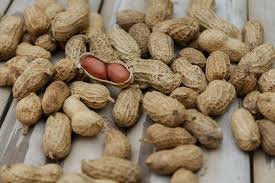 Peanut Shells:
Peanut Shells:
- Composition: Rich in cellulose and hemicellulose, peanut shells provide a favorable substrate for mycelial growth.
- Considerations: Proper processing may be required to manage the naturally occurring oils in peanut shells.
- Almond Shells:
- Composition: Almond shells contain lignocellulosic materials and can be a valuable substrate for certain mushroom species.
- Considerations: Processing may involve grinding or pelletizing to optimize substrate texture.
- Lentil Husks:
- Composition: Lentil husks are abundant and offer a mix of cellulose and hemicellulose.
- Considerations: Supplementation with nitrogen-rich materials may be necessary for a balanced nutrient profile.
Processing and Formulation
To unlock the potential of seed and legume shells/pods/husks, proper processing is crucial. Depending on the specific characteristics of the substrate and the targeted mushroom species, processing methods may include grinding, pelletizing, or other techniques to achieve a uniform and manageable substrate texture.
Grinding: Breaking down the shells into smaller particles through grinding enhances their surface area, facilitating better mycelial colonization.
Pelletizing: Agglomerating the substrate into pellets improves its handling and provides a more structured and uniform medium for mushroom growth.
Substrate Adjustments and Supplementation
While seed and legume shells/pods/husks offer a rich source of carbon, their nutrient profiles may require supplementation to meet the specific needs of mushrooms. Nitrogen-rich supplements, such as soybean meal, bran, or other organic materials, can be added to achieve a balanced nutrient composition.
Challenges and Considerations
Utilizing seed and legume byproducts as substrates is not without challenges. Certain shells may contain natural compounds or substances that require special attention.
Contaminants: Shells might carry contaminants or substances inhibitory to mycelial growth. Thorough sterilization is essential to mitigate these risks.
Specific Mushroom Requirements: Different mushroom species have varying nutritional and environmental requirements. Research and experimentation are necessary to tailor substrate formulations to the needs of specific fungi.
Sesame Stems and Soybean Stems for Pleurotus sajor-caju
Pleurotus sajor-caju, also known as the phoenix mushroom, has been reported to thrive on substrates like sesame stems and soybean stems. These agricultural residues, often overlooked, can serve as excellent substrates due to their fibrous nature and nutrient content. However, specific formulations may be required to address potential challenges such as excessive lignin content or nutrient imbalances.
Challenges and Considerations
While these alternative substrates hold promise, it’s crucial to acknowledge the challenges associated with their use. Adjustments in substrate formulation, supplementation, and sterilization methods may be necessary to overcome potential limitations. Factors such as pH, moisture content, and nutrient balance must be carefully managed to ensure optimal mushroom growth.
Alternative Substrates for Mushroom Cultivation
In the realm of mushroom cultivation, the choice of substrate plays a pivotal role in determining the success of the cultivation process. While soyhull has traditionally been a popular substrate, the cultivation community is increasingly exploring alternative options. This comprehensive overview delves into a variety of promising alternatives, including sunflower seed hulls, coir (coconut fiber), and agricultural byproducts such as corncobs, cotton waste, grape pomace, grasses, tea leaves, and various seed and legume shells/pods/husks.
Sunflower Seed Hulls: Emerging as a promising alternative, sunflower seed hulls boast a rich composition of cellulose and hemicellulose, providing an optimal environment for mycelial growth. Their abundance and cost-effectiveness make them an attractive choice for cultivators, offering a sustainable option that reduces reliance on traditional substrates.
Coir (Coconut Fiber): Derived from coconut husks, coir presents a sustainable and versatile substrate with a fibrous structure that aids in moisture retention. Its application spans substrate preparation to casing material, contributing to a balanced and stable environment for mycelium colonization.
Agricultural Byproducts: Various agricultural byproducts, including corncobs, cotton waste, grape pomace, grasses, and tea leaves, offer diverse nutrient profiles for mushroom cultivation. However, careful consideration is needed, with adjustments such as grinding or pelletizing, supplementation, and sterilization being essential.
Seed and Legume Shells/Pods/Husks: Often overlooked, these byproducts are rich in lignocellulose, providing a nutrient-rich substrate for mycelial growth. Examples such as peanut shells, almond shells, and lentil husks showcase the potential diversity in substrates. Processing techniques like grinding and pelletizing are employed to optimize their texture.
Sesame Stems and Soybean Stems: Identified as suitable substrates for Pleurotus sajor-caju, sesame stems and soybean stems offer fibrous structures and nutrient content. However, addressing challenges like excessive lignin content and nutrient imbalances requires specific substrate formulations.
While these alternatives hold promise, their implementation necessitates careful consideration of processing methods, supplementation requirements, and sterilization procedures. Challenges such as contaminants and species-specific needs must be addressed through ongoing research and experimentation. Diversifying substrate options contributes to a more sustainable and resilient mushroom cultivation industry, showcasing the potential for innovative and environmentally conscious approaches.

